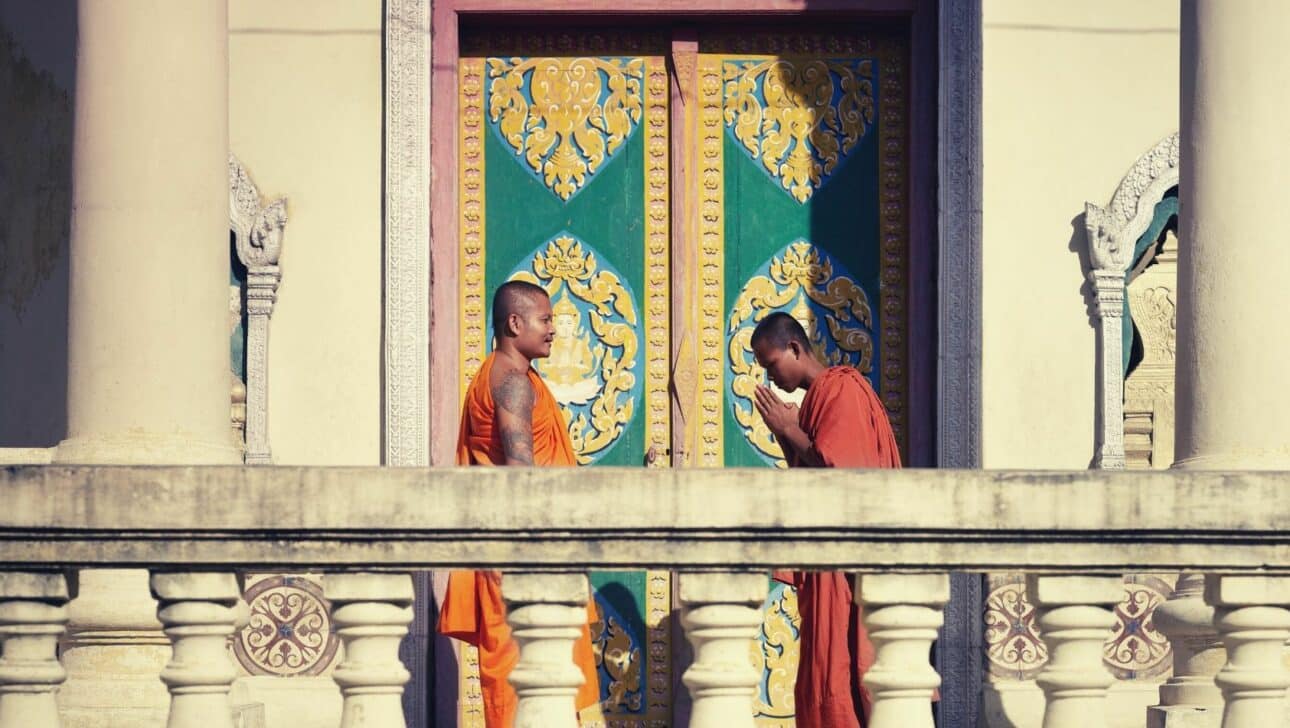Humans are inherently social creatures, and physical greetings have been an act of affection and respect since time immemorial.
Beyond social symbolism, they’re a biological necessity, slowing the heart rate, lowering blood pressure and flooding us with feel-good hormones.
In times of uncertainty, we naturally draw nearer to each other, holding those we care about close.
Yet, in this particular time of uncertainty—for many the longest ever endured—everything has been flipped on its head.
No longer a respectful, caring act, the simple shake of a hand, hug, or kiss have been deemed dangerous and irresponsible: no longer sharing affection, we are sharing pathogens. All of a sudden, distance, once a sign of detachment or unfriendliness, now conveys care and responsible behavior.
We all smile in the same language, but customary greetings can differ from country to country. Some nations have been practicing socially distant greetings for centuries. Others have had to adapt to a new way of communicating.
As we’re viewing greetings in an entirely new way, we looked into customs around the globe, and how some have had to change in the age of coronavirus.
Greeting customs that are already socially distant
Sticking out your tongue
It’s an ancient Tibetan tradition for monks to stick out their tongues as a greeting or sign of agreement. According to folklore, this stems from the rule of of a cruel, black-tongued king. After he died, Tibetans would stick out their tongues upon meeting to show they weren’t the cruel leader reincarnated.
Clapping hands
In parts of Africa like Zimbabwe and Mozambique, clapping hands is a part of saying hello. One person claps once, the second responds by clapping twice in a call and response pattern.
Wai / Sampeah
Thailand call this the wai greeting, in Cambodia, it’s the sampeah. You hold your palms together in front of your chest, pull your hands into the middle of chest and bend your neck forward in a slight bow, so that your index fingers touch your nose.
Namaste
Performed in India, Nepal and yoga classes across the world, namaste is a sanskrit salutation, meaning “I bow to you”. You join palms together, with your fingers pointing upward, held at heart level, and say the word namaste.
Bow
In Japan, a bow is used to say hello and goodbye and also as a sign of gratitude, sympathy and apology. Keeping your back and next straight, with your hands by your sides and your feet together, you bend down from the waist. The deeper and longer the bow, the more formal and respectful your greeting.
Shaka
Shaka is the most popular name, but this surfer salutation is also known as the tjovitjo in South Africa. Born in Hawaii, it consists of your three middle fingers curled into a fist, with your thumb and pinky extended.
Greetings that will need to be adjusted for social distancing
Cheek-kissing
The Romans began this trend, and it soon spread from Italy across Europe and beyond. There are regional and generational variations when it comes to how many kisses, which cheek to kiss first and whether an embrace is involved (when in doubt, follow the lead of the other person). In Italy, Spain, Portugal and Arab countries like Morocco, it tends to be two kisses. In France, Switzerland and the Netherlands, it’s often three or four. Greek people plant a kiss on both cheeks followed by a hug and pat on the back.
“Instead of kissing each other, now we say the French word kiss, bises or bisous aloud to each other from a distance.”
Hand-kissing
Traced back to an ancient Islamic script, the hand kiss is part of the salam greeting performed to elders or superiors in Turkey and Malaysia.
“In Turkey, we have replaced this with an ancient greeting called eyvallah, which is where we stand apart, place our hand over our heart and slightly bow to the other person.”
Handshake
England, Germany and China are the main hand-shaking nations. This requires a brief, firm grip of the palm of the other persons hand (too limp = sign of weakness, and too tight = aggressive). Tradition states you should always use your right hand (even if you are left handed).
“Something nicknamed the ‘Wuhan shake’ is China’s fun solution to hand shaking, which quickly caught on across the world. Basically, two people tap the insoles of their shoes together. Now, presidents across the world have been filmed doing it!”
“The elbow tap (usually used by surgeons) has become a way of saying hello and goodbye in the UK, where we don’t have to touch hands.”
Abrazo
The word abrazo is Spanish for embrace and it’s used to describe a familiar greeting in Colombia, Argentina, Chile and Peru. It usually begins with a handshake, pulled into a hug, followed by a kiss on one cheek.
“It has been so hard not being able to hug one another, but we have been creative with safe alternatives. Did you see the news article about the Argentine retirement home, where they made a plastic curtain so that families could hug each other?”
Hongi / Honi / Kunik
Māori tribes in New Zealand use the hongi, where two people press their noses and foreheads together. It’s a powerful greeting, symbolizing sharing the breath of life. For Polynesians, the honi is the same nose-to-nose greeting, with a deep breath in to exchange spiritual power. In Alaska, Inuit tribes have a similar expression named the kunik. In the United Arab Emirates, the same nose kiss greeting symbolizes friendship.
“Even before the WHO had declared the pandemic in March, Māori groups had announced we should all avoid the hongi. So, kiwis have taken to a greeting where we lift our chin and eyebrows instead.”
Rabbi Yosef Kanefsky: “Every hand that we don’t shake must become a phone call that we place. Every embrace that we avoid must become a verbal expression of warmth and concern. Every inch and every foot that we physically place between ourselves and another must become a thought as to how we might be of help to that other, should the need arise.”




